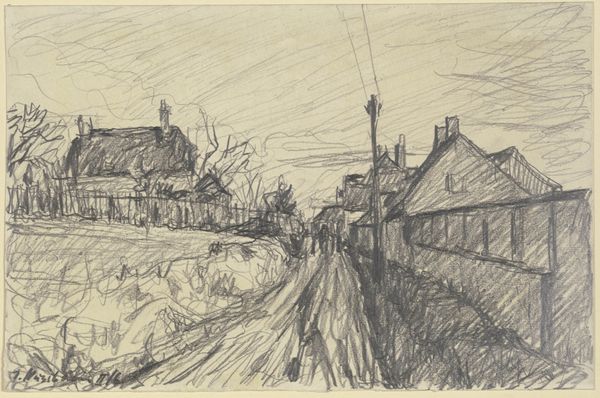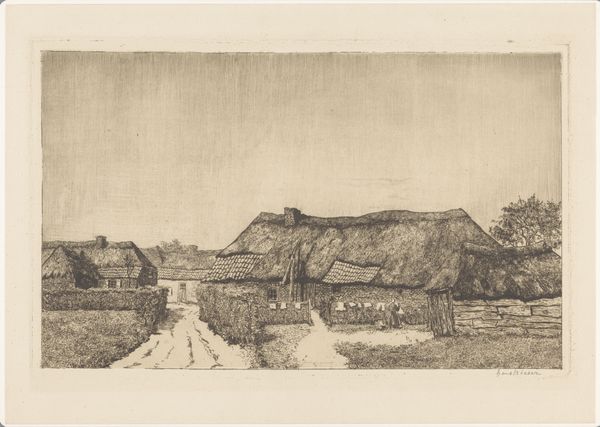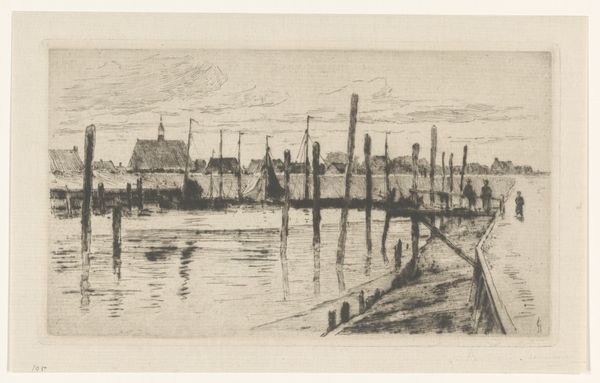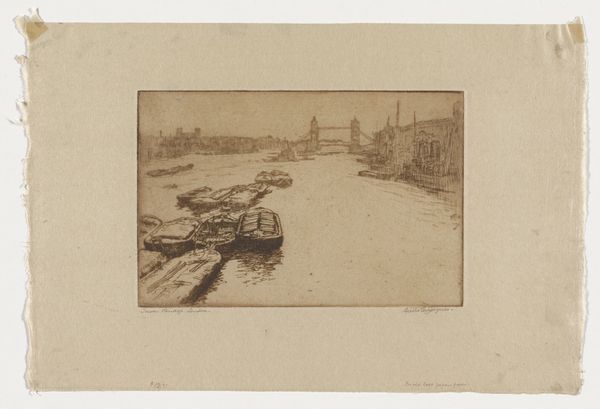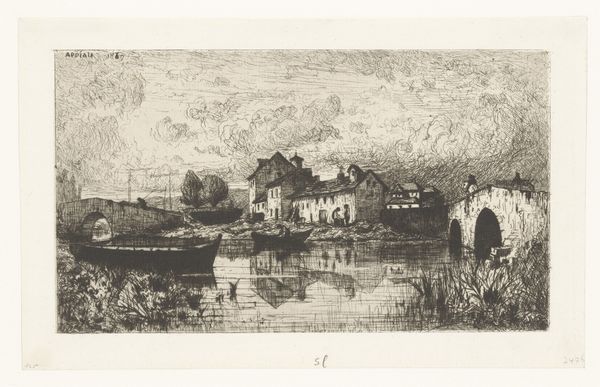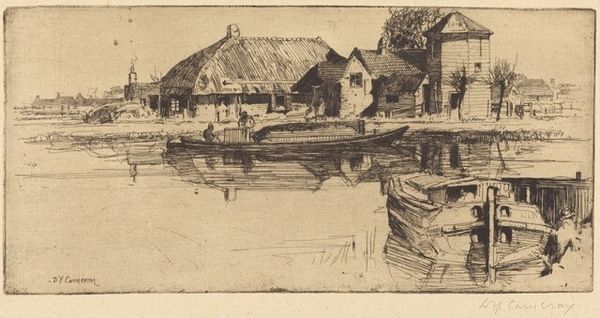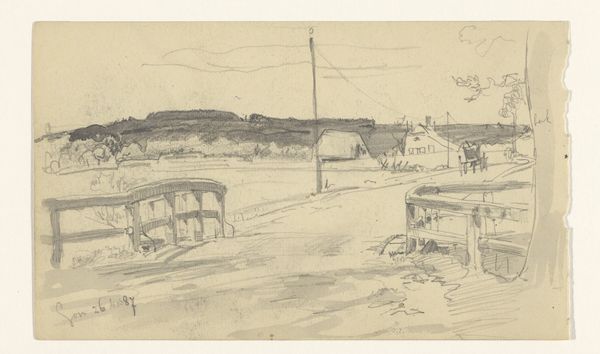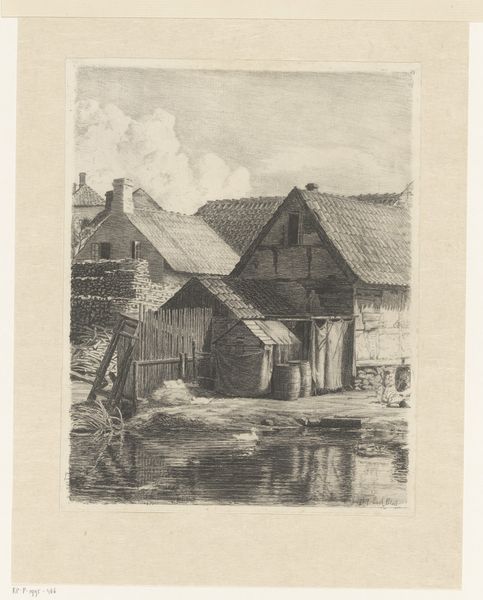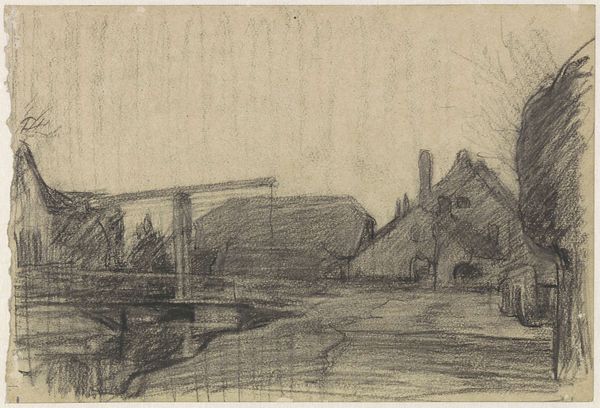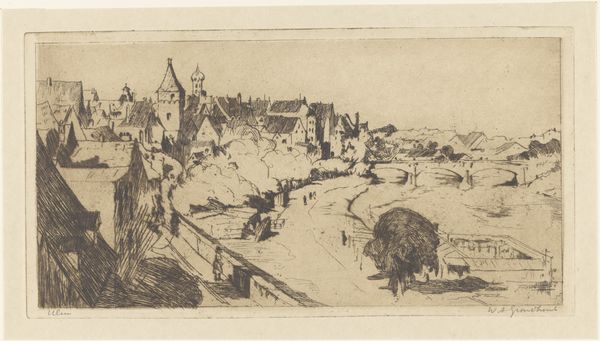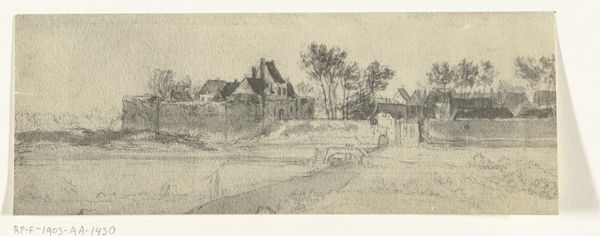
Dimensions: height 126 mm, width 210 mm
Copyright: Rijks Museum: Open Domain
Curator: Welcome. Before us is "Village Scene with Carts," a pencil drawing created by Willem Bastiaan Tholen sometime between 1870 and 1931. It's currently held in the collection of the Rijksmuseum. Editor: It strikes me as rather bleak. The limited tonal range, the sketch-like quality... it all conveys a sense of transience and the everyday struggle, or at least, the impression of a struggle. Notice how the weight of the heavy forms of the building dominate. Curator: I concur. The composition emphasizes the buildings as primary masses through a semiotic framework, which anchors our vision while the figures are almost nonexistent. How might the public reception of this piece at the time factor into the way it invites its viewership? Editor: In Tholen's era, the art world saw an increased focus on rural subjects, reflecting an urbanized society looking back to the country for authentic experiences. His rendering avoids sentimentality or picturesque clichés; the focus shifts away from romantic ideals towards stark reality. Consider how this sketch's focus departs radically from how earlier, romantic notions of rural life were perceived! Curator: Very insightful. From a Formalist perspective, one cannot ignore the materiality of the medium. The roughness of the pencil marks and the sparse application creates a raw and honest aesthetic. How does it signify this sense of authenticity in relation to Tholen’s wider artistic production? Editor: His Realist and Impressionistic sensibilities clearly align, suggesting an aesthetic tied closely with the direct recording of sensory impressions and sociopolitical realism—a kind of "warts and all" portrait. Think of the rise of documentary photography; this is very much an aesthetic sibling to that phenomenon. Curator: An interesting relationship! Perhaps these rapidly shifting styles point us to even deeper historical contexts that reveal an increasing turn towards the subject. In our journey today, it’s crucial to remember that even these fleeting gestures offer enduring commentaries about art’s historical roles. Editor: Indeed. Reflecting on Tholen's artwork highlights the dynamic exchange between form and culture. Even the barest lines articulate layers of context worth remembering.
Comments
No comments
Be the first to comment and join the conversation on the ultimate creative platform.



